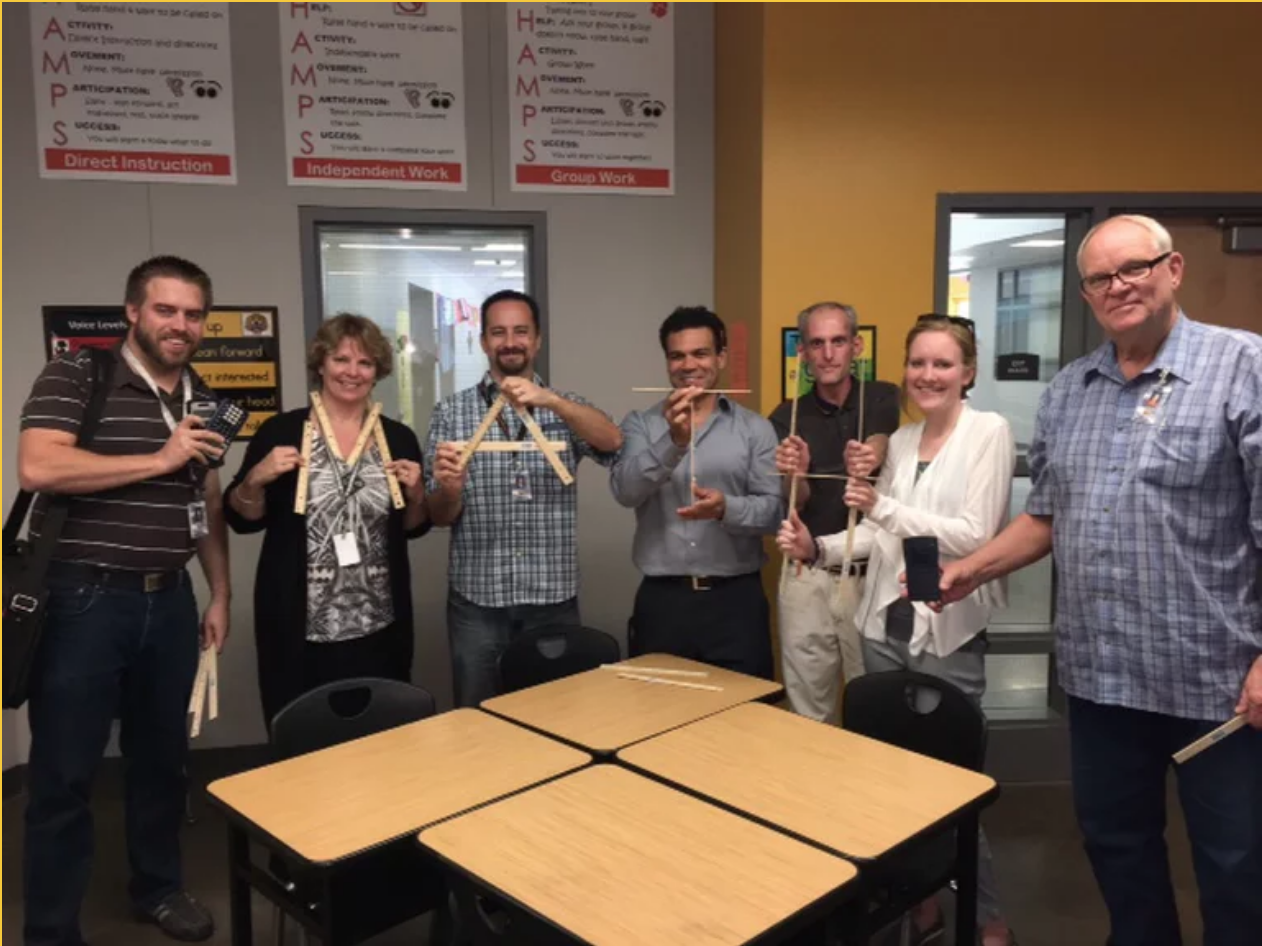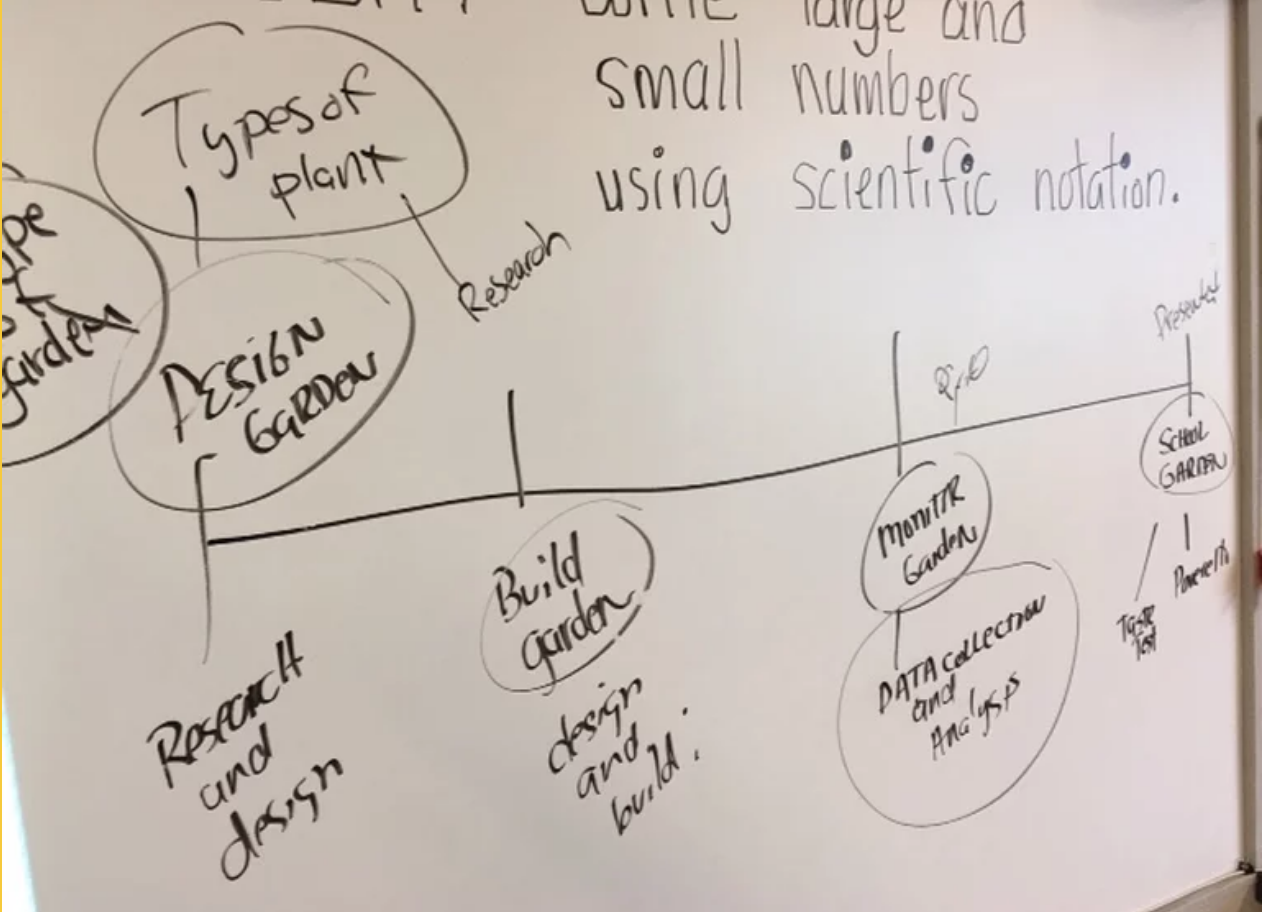Why is a math book always unhappy?
Because it always has lots of problems!
Ahhh math jokes. They’re always a hit at a party or social event. But so is the Gaston Middle Math Department. These teachers and educators are an incredible bunch. Ambitious, forward thinking, and ready to use Project Based Learning with their 7th and 8th graders. Our 4th day here was full of buzzing ideas, collaboration, and lots of laughs. Couldn’t have had a better Thursday!

Our training seminar yielded some quality driving questions for the 7th and 8th grade projects. So much so, that one question is being applied to both grades as the foundation of their projects. The final project presentation will be a data display of tables and graphs that provides answers to the question…
What plants will yield the highest amount of nutrients with the least amount of water?
We found this question to be one of the best ones developed so far. It will require students to have a hands-on approach to both, math and science. Students will be able to comprehend how their food is grown with limited resources and what crops/plants will be able to provide the most with the least amount of water needed. Questions like this spur critical thinking skills and encourage students to take in their real-world surroundings, such as the continuous drought in California, and apply it to growing food in their specific region.
The project idea drives math learning skills in order to calculate what plant or crop would be best suitable for their environment to grow and offer an abundance of food. Students will be able to research a variety of plants and crops and discover which ones offer the most nutritious food while requiring the least amount of water. The PBL method expands the horizons of students beyond just one department. The driving question behind the project is math-oriented, however, it also includes science and health.
Furthermore, the project will present the idea about how plants and crops can be sustainable in a particular environment. Students will need to measure the necessary rainfall required to keep crops sustainable along with the growth rate so they plants/crops will be viable to produce nutrient-rich food. Individual students can perform their own research on specific plants in order to collaborate with their fellow students to decide on what would be the best crop to grow.
 Students will also need to consider soil types, the quality of the soil, and how fertile it is for plant use. This particular area merges science into the math-based question. PBL allows for the mixing of different educational subjects thus facilitating learning that incorporates multiple elements from numerous subjects.
Students will also need to consider soil types, the quality of the soil, and how fertile it is for plant use. This particular area merges science into the math-based question. PBL allows for the mixing of different educational subjects thus facilitating learning that incorporates multiple elements from numerous subjects.
We will be keeping in touch with our friends over at the Gaston Middle Math Department throughout the year to monitor the students progress on their projects. We are looking forward to their visual display of data and graphs detailing what plants will be the most viable in terms of least water used while yielding the highest amount of nutrients.
Interested in developing your own PBL method for your classroom or department? Contact Educators of America today to see how we can help you and your school!
Stay tuned for our final day at Gaston Middle tomorrow!
